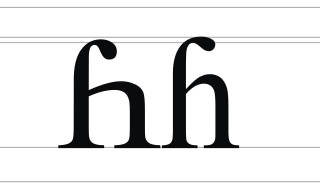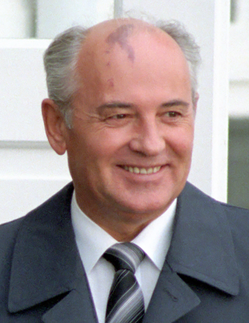
The Abkhaz alphabet is a Cyrillic alphabet of 62 letters used for the Abkhaz language.

Abkhaz, also known as Abkhazian, is a Northwest Caucasian language most closely related to Abaza. It is spoken mostly by the Abkhaz people. It is one of the official languages of Abkhazia, where around 100,000 people speak it. Furthermore, it is spoken by thousands of members of the Abkhazian diaspora in Turkey, Georgia's autonomous republic of Adjara, Syria, Jordan and several Western countries. The Russian census of 2010 reported 6,786 speakers of Abkhazian in Russia.
Labialization is a secondary articulatory feature of sounds in some languages. Labialized sounds involve the lips while the remainder of the oral cavity produces another sound. The term is normally restricted to consonants. When vowels involve the lips, they are called rounded.

Schwa is a letter of the Cyrillic script, derived from the Latin letter schwa. It is currently used in Abkhaz, Bashkir, Dungan, Itelmen, Kalmyk, Kazakh, Kurdish, Uyghur and Tatar. It was also used in Azeri, Karakalpak, and Turkmen before those languages switched to the Latin alphabet. The Azeri and some other Latin-derived alphabets contain a letter of similar appearance (Ə/ə).

Ka with descender is a letter of the Cyrillic script used in a number of non-Slavic languages spoken on the territory of the former Soviet Union, including:

Ge with middle hook is a letter of the Cyrillic script used in the Abkhaz and Yakut languages to represent the voiced velar fricative. In Unicode, this letter is called "Ghe with middle hook". The letter was invented in 1844 by Andreas Johan Sjögren for the Ossetian language from the contraction of Cyrillic Г and Gothic .
Ka with stroke is a letter of the Cyrillic script. It is formed from the Cyrillic letter Ka (К к) by adding a stroke through the upper part of the vertical stem of the letter.

Pe with middle hook is a letter of the Cyrillic script. Its form is derived from the Cyrillic letter Pe (П п) by the addition of a hook to the middle of the right leg.

Te with descender is a letter of the Cyrillic script. Its form is derived from the Cyrillic letter Te by the addition of a descender to the leg of the letter.
Te Tse is a letter of the Cyrillic script. The shape of the letter originated as a ligature of the Cyrillic letters Te and Tse.
The written Abkhaz literature appeared relatively recently in the beginning of the 20th century although Abkhaz oral tradition is quite rich. Abkhaz share with other Caucasian peoples the Nart sagas — series of tales about mythical heroes, some of which can be considered as creation myths and ancient theology. There also exist historical legends, brigands' and hunters' songs, satirical songs and songs about the Caucasian War and various ritual songs.

Cche is a letter of the Cyrillic script. It was used in the old Abkhaz alphabets, where it represents the voiceless retroflex affricate. The letter was invented by baron Peter von Uslar. In 1862 he published his linguistic study "Абхазский язык". The letter is Ҽ-shaped but in 1887 Uslar's study was reprinted by M. Zavadskiy who changed its shape and the result resembled a Cyrillic Ч doubled. Later the letter returned to its initial form which, created by linguist Uslar, is part of modern Abkhaz alphabet, which is depicted as Ҽ.

El with middle hook is a letter of the Cyrillic script. Its form is derived from the Cyrillic letter El (Л л) by adding a hook to the middle of the right leg.

Zhwe is a letter of the Cyrillic script. The shape of the letter originated as a ligature of the Cyrillic letters Ze and Zhe.

Dzwe is a letter of the Cyrillic script. It resembles an intact longer Cyrillic Dze, but perhaps was derived from the Greek letter ζ.

Te with middle hook is a letter of the Cyrillic script.

Twe is a letter of the Cyrillic script. Its glyph consists of a retroflex hook attached to the bottom of the Cyrillic letter Te.

Hwe is a letter of the Cyrillic script.

Tche is a letter of the Cyrillic script. The shape of the letter originated as a ligature of the Cyrillic letters Te and Che.

Shwe is a letter of the Cyrillic script. It has a long tail to the bottom of the Sha.
















